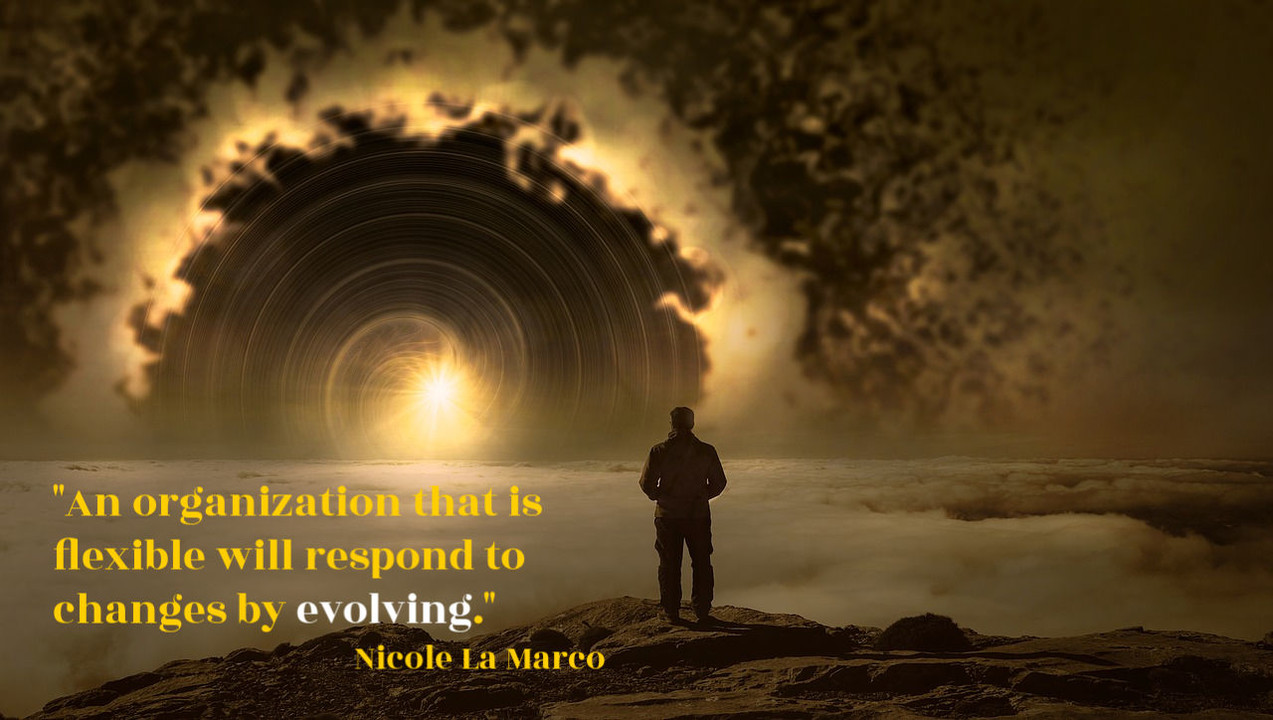
Is Your Growing Business An Innovating Organization?
According to James Canton, Author of The Extreme Future, “Developing a predictive awareness about the future is about knowing where to look, what to see, and how to apply it…the way you think about the future—as a sequence of events that can be influenced by personal choice and design— may be one of the most powerful forces in your life.“ Therefore, creative individuals can achieve great things with new businesses when they are aware of the tremendous potential available to everyone in this Innovative Economy.
I’ve just completed an excellent, free online course in Open2Study offered by Open Universities of Australia. The course was entitled “Innovation for Powerful Outcomes” by Dr. Noordin Shehabuddeen. He revealed that an organization that thinks it is innovative and creative is truly innovative if it is flexible, tolerant of mistakes and understands its' customers. Let’s consider each one of these characteristics separately.
The business is flexible. Nicole La Marco in “The Advantages of Flexibility in an Organization” states:
“An organization that is flexible will respond to changes by evolving. The most flexible organization does not fight change; a flexible organization accepts change as an inevitable part of the business environment, so it learns to maximize its opportunities whenever change comes along.”
Advantages:
Increased efficiency - You’re always looking for improvements to your Systems and processes.
Promotes flexible scheduling - This encourages loyalty to your business because you’re allowing for individual needs. An example could be to allow telecommuting or/and flextime.
Enhanced team building - You have the ability to assign people to task according to skills. They are not held to rigid job descriptions. They get opportunities to work with a variety of people in a variety of situations.
Continuity during uncertain times - Weather conditions and other environmental changes can be managed with less impact on your overall productivity because of flexible scheduling and telecommuting.
The environmental impact of your business is reduced - Flexible organizations rely on technology with less commuting to and from work. Both advancing technology and telecommutingI've just written reduce environmental impact.
Hiring and turnover costs are less - Satisfied employees continue to contribute over long periods of time. They enjoy continuous growth, learning and flexibility.
Fast growth - This happens because everyone in your business constantly looks for things to improve. They stay abreast of technological developments that are relevant to what you are doing. Your Systems and other operations are not static. They can change with the environment, technology or innovation impacting them.
The business is tolerant of mistakes.
You must be a Failure-Tolerant leader. (Richard Farson and Ralph Keyes)
“In recent years, more and more executives have embraced this point of view, coming to understand what innovators have always known: that failure is a prerequisite to invention. A business can’t develop a breakthrough product or process if it’s not willing to encourage risk taking and learn from subsequent mistakes.” This isn’t easy but Farson and Keyes says those who wish to be Failure-Tolerant leaders can do 5 things:
- Help people overcome their fear of failure through your own actions and words.
- Create a culture of intelligent risk taking.
- Encourage people to think of failure as a learning event not just the opposite of success.
- Emphasize the importance of any idea no matter where it comes from.
- View mistakes as an educational process and a signpost toward a goal.
Related: Test the Feasibility of Your Innovation
The business understands its' customers.
In “Customer Needs Should Drive Innovation” by Dave Power, he states:
“If you understand the customer problem you dramatically improve your odds of successful innovation. Clayton Christensen, author of The Innovator’s Dilemma, underscores this point when he encourages innovators to understand the jobs a customer needs to get done.”
Take these steps:
Go to where your customers are and interact with them - The need to actually know what your customers’ pain points are is critical. Ask questions such as “ Are you happy with the service/product available to you now? Then, “How could we change that?
Determine your market type - are you entering an existing market, creating a new market, or improving some aspect of a market. See “The Four Steps to The Epiphany” Steve Blank
Use available technology to learn the habits and needs of your target population. You can easily research the needs and buying habits of your ideal customers. After you have obtained this knowledge you will know how to persuade potential customers that your product or service and its’ innovations will serve their best interests.
“The Innovation Economy will accelerate the largest personal wealth opportunity in the history of civilization. The deep connection between innovation and liberty will shape the future.” Canton
Your growing business has the opportunity, more now than ever before, to be extremely prosperous as your innovations help manifest a positive future for us all.
See also: "20 Small Business Directives for Success: Do or Die" and The GeniusCore Business Building Podcast


Change: Remove the complexity and install the simple process. THEN you will see growth.
5yVery good article. Some of the study's I have been in lately say that also knowing why they do what they do has a lot to do with staying ahead of change.